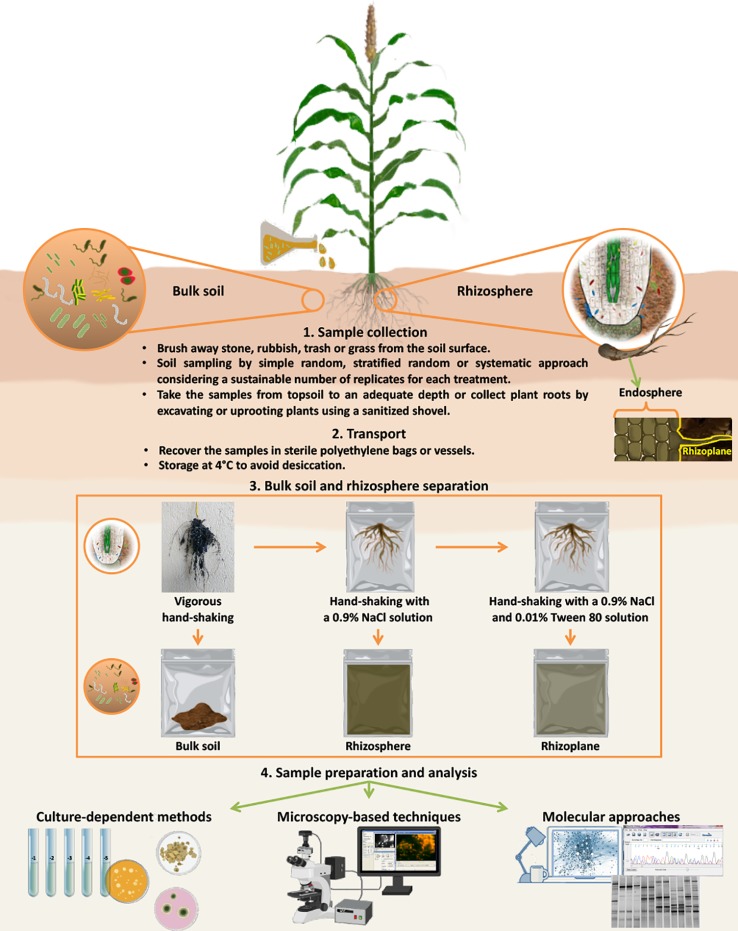Figure 1.
Schematic description of sampling collection, separation of different soil fractions, and methods (culture-dependent methods, microscopy-based techniques and molecular approaches) for the detection of microbial inoculants. After plant sampling, roots should be shaken vigorously by hand to collect bulk soil (soil not adhering to roots and not influenced by exudates). Shaking the roots a second time in a sterile 0.9% NaCl solution allowed rhizosphere (soil area influenced by plant roots and their exudates) collection, and shaking the roots a third time in the same sterile solution containing Tween 80 (0.01% v/v) allowed the rhizoplane (thin layer of soil strongly adhering to the roots) fraction to be collected. To study microbial endophytes, it is necessary to add a step of sterilization of the root surfaces prior to grinding, chopping or blending them. Root samples should be analyzed in a short time (24–48 h) to evaluate the density of the cultivable microorganisms by plating on growth media or they can be stored in a solution PBS buffer and 70% ethanol at -20°C for later analysis by culture-independent methods (microscopic and molecular methods).

